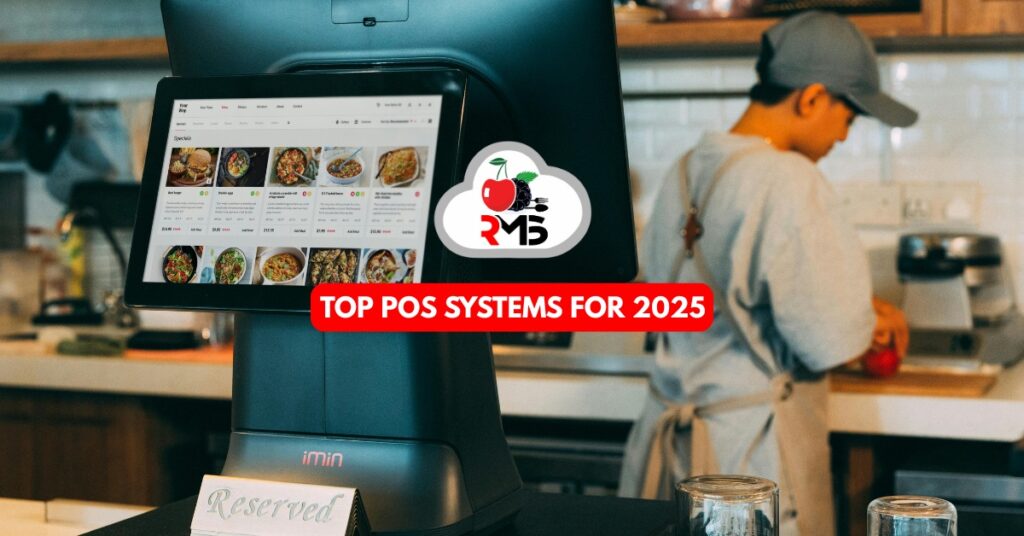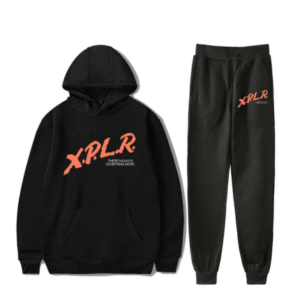
Ultimate Guide to Cloud POS, Kitchen Systems & Restaurant Marketing in 2025
The restaurant industry stands at a technological crossroads. While passion for food and hospitality remains the soul of any dining establishment, technology has become the backbone that supports growth, efficiency, and customer satisfaction. Today’s restaurant owners face unique challenges that require innovative solutions—and those who adapt will thrive in an increasingly competitive marketplace.
Why Traditional Restaurant Management No Longer Works
Picture this: It’s Friday evening, your restaurant is packed, orders are flooding in from multiple channels—dine-in guests, phone calls, and delivery apps. Your kitchen staff is overwhelmed, tickets are getting mixed up, and customers are growing impatient. This scenario plays out in countless restaurants every day, but it doesn’t have to be your reality.
The solution lies not in working harder, but in working smarter through strategic technology adoption. Modern Restaurant Technology isn’t about replacing the human touch—it’s about empowering your team to deliver exceptional experiences consistently.
Mastering Kitchen Chaos: The Digital Kitchen Revolution
Every restaurant owner knows that the kitchen is where the magic happens—or where chaos reigns. The Best kitchen management system in Lahore 2025 transforms your kitchen from a pressure cooker of stress into a well-orchestrated symphony of culinary excellence.
Think of a kitchen management system as your kitchen’s air traffic controller. It monitors every order, tracks preparation stages, manages ingredient availability, and ensures nothing falls through the cracks. Unlike traditional ticket systems where orders pile up and get lost, digital systems display everything clearly on screens positioned at each station.
The impact on your operation is immediate and measurable. Food preparation becomes synchronized, reducing bottlenecks. Your team knows exactly what needs to be prepared and in what sequence. Ingredient tracking prevents shortages and minimizes waste—imagine never running out of a key ingredient during dinner rush again.
What sets modern systems apart is their intelligence. They learn your kitchen’s patterns, predict busy periods, and even suggest prep schedules. For restaurants in Lahore’s competitive dining scene, this technology isn’t just an upgrade—it’s a survival tool that separates thriving establishments from struggling ones.
The Cloud Revolution: Managing Your Restaurant from Anywhere
Remember when managing a restaurant meant being physically present at all times? Those days are over. The best cloud restaurant POS software has liberated restaurant owners from being chained to their establishments while maintaining complete control.
Cloud-based systems represent a fundamental shift in restaurant management philosophy. Your entire operation—sales data, inventory counts, employee schedules, customer information, and financial reports—exists in the cloud, accessible from your smartphone, tablet, or laptop wherever you are.
Consider the practical implications: You’re at home but can see real-time sales numbers. You’re on vacation but notice an inventory discrepancy and can address it immediately. You’re scouting a second location but can still manage your current restaurant seamlessly. This level of flexibility was unimaginable just a few years ago.
Beyond convenience, Cloud Systems offer superior security. Your data is backed up automatically, protected by enterprise-grade encryption, and recoverable even if physical hardware fails. Updates happen automatically without disrupting service. Integration with other platforms occurs seamlessly through the cloud.
For multi-location restaurants, cloud technology becomes even more powerful. Compare performance across locations instantly, standardize operations, transfer inventory between sites, and maintain consistent customer experiences regardless of which branch they visit.
Building Your Brand: Strategic Marketing That Drives Revenue
Outstanding food is your product, but without effective marketing, potential customers never discover you. A specialized restaurant marketing agency in Lahore bridges the gap between your culinary excellence and the customers who would love it.
The restaurant marketing landscape has undergone significant evolution. Success today requires understanding social media algorithms, local SEO optimization, influencer partnerships, content creation, review management, and paid advertising strategies. For most restaurant owners, mastering these disciplines while running daily operations is simply impossible.
Professional marketing agencies bring focused expertise. They understand what makes food photography compelling, how to create videos that go viral, when to post for maximum engagement, and which platforms deliver the best return on investment for restaurants.
More importantly, they develop strategic campaigns rather than random posts. They might launch a limited-time menu item with coordinated Instagram teasers, influencer collaborations, email campaigns to existing customers, and targeted Facebook ads to new audiences. Each element reinforces the others, creating momentum that individual efforts cannot achieve.
The financial logic is compelling. Rather than hiring a full-time marketing team, you access experienced professionals who work with multiple restaurants and bring proven strategies. They stay current with platform changes, trend shifts, and emerging opportunities so you don’t have to.
Decoding Delivery: The Rider App Ecosystem
Delivery has transformed from a convenience to an expectation. Understanding what’s rider app in the USA reveals how the delivery ecosystem functions and how your restaurant fits into it.
Rider apps are sophisticated platforms that coordinate the complex dance of restaurant pickup and customer delivery. When a customer orders through DoorDash, Uber Eats, or similar platforms, the rider receives the order through their dedicated app, which provides optimized routing, estimated pickup times, customer delivery details, and earnings information.
These apps use advanced algorithms to assign orders efficiently, considering factors like driver location, restaurant preparation time, delivery distance, and traffic conditions. The goal is to minimize delivery time while maximizing driver efficiency.
For restaurants, understanding this system is crucial for success. Preparation timing directly impacts delivery experience. If food sits waiting for a rider, it arrives cold. If it’s not ready when riders arrive, they’re delayed and customer satisfaction drops. The best restaurants synchronize their kitchen management systems with delivery platforms, ensuring food is ready precisely when riders arrive.
The rider app ecosystem also provides valuable data. You can track which items travel well, identify peak delivery times, understand customer preferences by neighborhood, and optimize your delivery menu accordingly. Restaurants that master delivery operations often see it become their fastest-growing revenue channel.
Never Lose Revenue: Professional Call Management
Despite the digital revolution, phone orders remain surprisingly significant. The Best Restaurant call centre services in Lahore 2025 ensure you capture every order while maintaining quality and efficiency.
Phone orders present unique challenges. During rush periods, your staff is busy serving customers, preparing food, and managing the floor. Taking phone orders becomes a distraction that compromises service quality. Missed calls mean lost revenue—potentially thousands of rupees daily for popular restaurants.
Professional call centres solve this problem elegantly. Dedicated agents answer every call promptly, know your menu thoroughly, handle customer questions professionally, take accurate orders, and enter them directly into your system. Your staff never misses a beat, and customers receive attentive service.
Advanced call centres operate extended hours, capturing orders during off-peak times when your restaurant might be closed for dine-in but can handle takeout and delivery. They provide multilingual support, accommodating Lahore’s diverse population. They track caller data, building customer profiles that enable personalized service.
Integration is key. When call centre agents enter orders directly into your cloud restaurant POS software, information flows instantly to your kitchen management system without manual intervention. This eliminates transcription errors, reduces preparation time, and ensures accuracy.
Creating Synergy: The Integrated Restaurant Ecosystem
Individual technologies provide incremental improvements, but true transformation occurs when systems work as an integrated whole. Imagine your restaurant as a living organism where every system communicates seamlessly.
A customer discovers your restaurant through a targeted campaign by your restaurant marketing agency in Lahore. They call to order, and your call centre agent takes their order while noting dietary preferences. The order populates your cloud restaurant POS software automatically, generating a ticket in your kitchen management system that routes each item to the appropriate station. The order is prepared efficiently and handed to a delivery rider whose rider app guides them to the customer’s door.
Meanwhile, you’re reviewing real-time analytics on your phone, noticing this customer is a first-time orderer. Your system automatically adds them to your marketing database for future promotions. You see that the preparation time for this order was two minutes faster than average—your kitchen optimization is working.
This level of integration creates competitive advantages that accumulate over time. Operational efficiency improves, customer satisfaction increases, costs decrease, and revenue grows. Your team works with confidence, supported by technology that handles complexity seamlessly.
Investment Strategy: Building Your Technology Stack
Implementing restaurant technology requires strategic investment. The question isn’t whether to invest, but how to prioritize and sequence your technology adoption.
Start by identifying your biggest pain points. Is it kitchen chaos during rush hours? Lost revenue from missed calls? Inconsistent marketing efforts? Delivery complications? Address the most pressing issue first, prove the return on investment, then expand.
Consider the total cost of ownership, not just initial prices. Cloud-based systems with monthly subscriptions often provide better value than expensive hardware purchases. Factor in training time, integration costs, and ongoing support when evaluating options.
Look for providers offering comprehensive support. Technology is only valuable when your team uses it effectively. Quality providers offer training, responsive customer service, and regular updates that keep you current with evolving capabilities.
Success Stories: Real Results from Technology Adoption
Restaurants that embrace technology consistently report similar outcomes: ticket times decrease by 30-40%, food waste drops by 20-25%, order accuracy improves to 98%+, customer complaints decrease significantly, and revenue increases by 15-30% within the first year.
These aren’t aspirational goals—they’re documented results from restaurants that committed to technological transformation. The improvements compound over time as your team masters the systems and you optimize processes based on data insights.
Future-Proofing Your Restaurant
The restaurant technology landscape continues evolving. Artificial intelligence will increasingly predict customer preferences, optimize pricing, and forecast demand. Automation will handle more routine tasks. Customer expectations will continue rising.
Restaurants that build strong technological foundations today position themselves to adopt future innovations seamlessly. Those who resist change will find themselves increasingly unable to compete.
Taking Action: Your Next Steps
Transformation begins with a single step. Research providers offering the technologies discussed here. Request demonstrations. Talk with other restaurant owners who’ve implemented these systems. Calculate potential returns based on your current operation.
Don’t attempt everything simultaneously. Choose one system to implement first, master it, measure results, then expand. Build momentum through successive wins rather than overwhelming your team with too much change at once.
The restaurants dominating Lahore’s dining scene in 2025 aren’t those with the biggest budgets or fanciest locations—they’re those that leverage technology to consistently deliver exceptional experiences. Your restaurant can join their ranks.
Final Thoughts
Restaurant success in 2025 requires balancing tradition with innovation. Your passion for food and hospitality will always be irreplaceable, but technology amplifies your ability to share that passion with more customers, more consistently, more profitably.
The best kitchen management system in Lahore 2025, cloud restaurant POS software, professional restaurant marketing agency in Lahore, understanding of what’s rider app in USA, and best restaurant call centre services in Lahore 2025 aren’t separate tools—they’re interconnected elements of a comprehensive strategy for restaurant excellence.
The choice is simple: evolve with technology or be left behind. Your customers, your team, and your bottom line will thank you for choosing evolution.
Frequently Asked Questions
Q1: How quickly can I see ROI from restaurant technology investments?
Most restaurants begin seeing positive returns within 3-6 months of implementation. Kitchen management systems typically show immediate impact through reduced waste and faster service. Cloud POS systems deliver value through better inventory management and real-time insights. Marketing agency partnerships usually require 2-3 months to build momentum but then generate consistent customer acquisition. Call centre services show immediate ROI by capturing previously missed orders. The key is measuring relevant metrics before and after implementation to quantify improvements accurately.
Q2: Will my staff resist new technology?
Initial resistance is natural but manageable. The key is involving staff early in the selection process, emphasizing how technology makes their jobs easier rather than harder, providing comprehensive training, and celebrating early wins. Most staff resistance stems from fear of the unknown—once they experience how much easier their work becomes, they become technology advocates. Starting with one system and mastering it before adding others also prevents overwhelming your team.
Q3: What makes cloud restaurant POS software superior to traditional systems?
Beyond remote access, cloud systems offer automatic backups protecting against data loss, seamless updates without downtime, easier multi-location management, superior integration with delivery platforms and other tools, lower upfront costs, automatic compliance with tax regulations, and scalability that grows with your business. Perhaps most valuable is the real-time data access that enables immediate decision-making rather than waiting for end-of-day reports.
Q4: How do I choose the right restaurant marketing agency in Lahore?
Prioritize agencies with specific restaurant experience and demonstrated results in the food service industry. Review their portfolio of restaurant clients, ask for case studies with measurable outcomes, verify they understand local market dynamics in Lahore, ensure they offer transparent reporting and regular communication, confirm they have in-house content creation capabilities including food photography, and validate they stay current with social media platform changes. Schedule consultations with multiple agencies to compare strategies and find the best cultural fit.
Q5: What exactly happens with rider apps when someone orders delivery?
When a customer places a delivery order through platforms like DoorDash or Uber Eats in the USA (or Foodpanda in Pakistan), the order goes to your restaurant system and simultaneously to the platform’s rider network. Nearby riders receive notifications through their Rider App showing the pickup location, delivery destination, estimated earnings, and other details. Riders accept orders based on convenience and profitability. The app then guides them to your restaurant, notifies them when food is ready, provides optimized navigation to the customer, and confirms delivery. Understanding this workflow helps you optimize preparation timing for better delivery experiences.
Q6: Are call centre services really necessary if I have online ordering?
Absolutely. Phone orders represent 20-40% of total orders for most restaurants, particularly among older demographics, corporate clients placing large orders, and customers with special requests. Professional call centres ensure you never miss these orders while freeing your staff to focus on in-restaurant service. They also provide extended hours capturing orders when you’re closed for dine-in, offer multilingual support serving diverse communities, handle complex inquiries your automated systems can’t address, and build personal relationships that increase customer loyalty.
Q7: How does system integration actually work between different platforms?
Modern restaurant systems connect through APIs (Application Programming Interfaces), which are standardized ways for different software to communicate. When your call centre enters an order into your POS system, the API instantly transmits that data to your kitchen management system, which displays it on appropriate kitchen screens. Similarly, delivery platform orders flow automatically into your POS and kitchen systems. Quality providers ensure their systems have robust API capabilities, and many offer integration assistance during implementation. The goal is creating a seamless flow where data entered once populates all relevant systems automatically.
Q8: What if I’m a small restaurant—is this technology only for larger operations?
Technology benefits restaurants of all sizes, with solutions scaled to your needs and budget. Small restaurants often see proportionally greater benefits because efficiency improvements have immediate impact. Many providers offer tiered pricing making technology accessible to single-location restaurants. Start with one system addressing your biggest pain point, prove the value, then expand. Small restaurants that embrace technology early often outcompete larger, slower-moving competitors.
Q9: How do I handle customer data privacy with these systems?
Reputable technology providers comply with data protection regulations and implement security measures like encryption, secure servers, access controls, and regular security audits. Ensure any provider you choose clearly explains their data privacy policies, commits to not sharing customer information with third parties without permission, and provides tools for managing customer data according to privacy regulations. Professional call centres and marketing agencies should also have explicit privacy policies protecting customer information.
Q10: Can I switch providers if I’m unhappy with my initial technology choice?
While switching is possible, it involves effort and potential disruption, making careful initial selection important. Most quality providers offer trial periods or phased implementations allowing you to evaluate before full commitment. When evaluating providers, ask about data portability—your ability to export data if you switch, contract terms and cancellation policies, and experiences of other restaurants who’ve worked with them. Choose providers with strong reputations and responsive customer service to minimize the likelihood of needing to switch.


